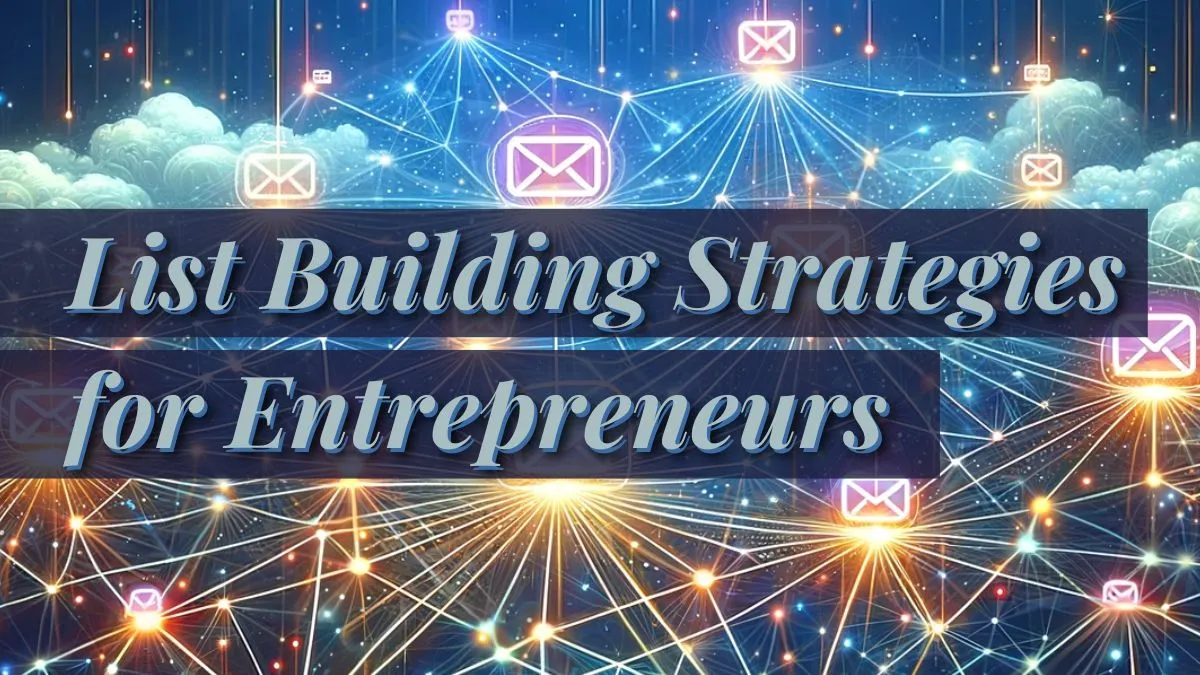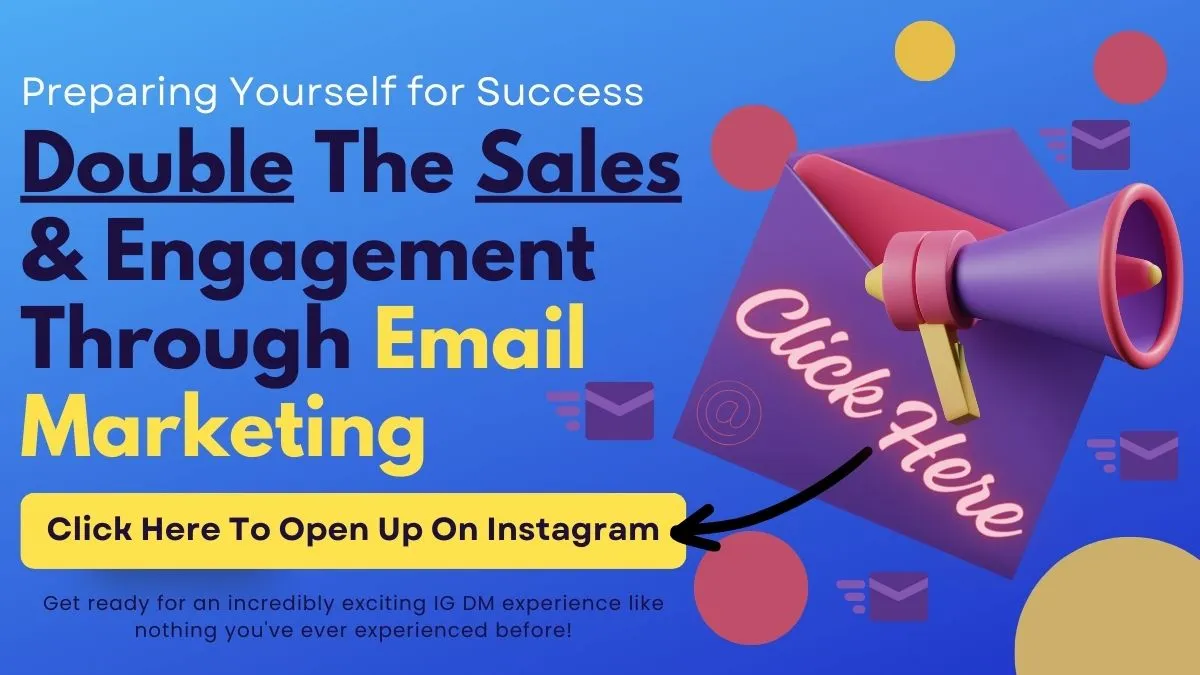How To Leverage Email Marketing Lists For Business Success

Start Building Your List Here
In the rapidly evolving digital world, the role of Email Marketing Lists is more crucial than ever before.
As businesses strive to connect with their audience in a personalized, meaningful manner, these lists serve as a powerful tool in the marketing arsenal.
This guide aims to unravel the value of a highly targeted Email Marketing List and how you can harness its potential for driving business growth.
Mastering the Art of Email Marketing Lists

When we talk about an Email Marketing List,' what are we referring to?
Essentially, an Email Marketing List is a collection of email addresses that a business has gathered from visitors or customers who would like to receive information, updates, or special offers.
But the true essence of an Email Marketing List lies beyond just being a list of email addresses—it's a direct line of communication with your potential or existing customers.
Understanding how Email Marketing Lists work is crucial to leveraging them effectively. When a visitor lands on your website or interacts with your business, they may choose to provide their email address voluntarily.
Offering incentives such as discounts or valuable information helps grow an Email Marketing List.
However, the value of an Email Marketing List is determined not just by its size but also by its quality. A list full of engaged, interested subscribers, no matter its size, is more valuable than a massive list of uninterested individuals.
When utilized correctly, a well-segmented and targeted Email Marketing List can become one of your most powerful marketing tools.
Building Your Own Email Marketing List

Now that we understand the fundamental aspects of Email Marketing Lists, let's delve into how to build your own.
The golden rule of list building is to ensure quality over quantity. It might be tempting to amass as many emails as possible, but a list full of uninterested individuals will do you no good.
Here are some effective strategies to build a robust Email Marketing List:
Opt-in Forms
These can be placed on your website or blog, where visitors can willingly provide their email addresses.
Be clear about what they're signing up for to build trust and reduce the risk of unsubscribes or spam reports.
Lead magnets
Offering something of value, like a free ebook, a discount, or access to exclusive content, can encourage visitors to subscribe.
Webinars or online events
These can serve as a platform for interested individuals to provide their email addresses in exchange for the valuable content or learning that you provide.
Building an Email Marketing List is a gradual process that requires patience, effort, and a keen focus on maintaining list quality.
In the long run, it will provide a direct channel for fostering relationships with your audience, nurturing leads, and converting them into loyal customers.
Segmenting Your Email Marketing List

As your email marketing list grows, it becomes essential to keep it organized to ensure that your emails land in the right inbox. This is where list segmentation comes into play.
Email list segmentation is the process of dividing your email list into smaller, more targeted groups based on specific criteria. These criteria can include customer behavior, preferences, purchase history, demographics, and more.
Why is segmentation important in email marketing?
It enables you to send personalized content tailored to each segment's specific interests, leading to better engagement rates.
The more relevant your emails are, the higher the likelihood of achieving your marketing goals.
Here are some simple steps to segment your email list effectively:
Analyze your audience
Understand the characteristics of your subscribers. What are their interests, preferences, demographics, and purchase patterns?
Set your segmentation criteria
Based on your audience analysis, define how you want to segment your list.
Create your segments
Using your Email Service Provider (ESP), divide your list into the segments you have defined.
Personalize your content
Create content that addresses the unique needs and interests of each segment.
Remember, successful segmentation means sending the right content to the right people, improving your email relevance and engagement.
Maintaining Email Marketing List Health

A healthy email list is the key to successful email marketing. Maintaining your list's health involves regularly cleaning it, removing inactive or unengaged subscribers, and ensuring your emails are compliant with regulations.
Regularly removing inactive subscribers from your list is essential. These could be subscribers who haven't opened your emails in a while, have repeatedly marked them as spam, or have invalid email addresses.
By doing this, you improve your email deliverability and engagement rates.
Engagement is a vital aspect of email list health. The more your subscribers interact with your emails (by opening them, clicking links, or making purchases), the better your sender reputation becomes.
This leads to more of your emails landing in the inbox rather than the spam folder.
Additionally, you must adhere to email marketing laws and regulations, like the CAN-SPAM Act and GDPR. Ensure you have your subscribers' consent to email them and provide an easy way for them to unsubscribe.
Integrating Email Marketing Lists with your Marketing Strategy

Your email marketing list does not work effectively on its own. Instead, it should be integrated with your overall marketing strategy, aligning with your business goals and enhancing other marketing efforts.
Email marketing can play a significant role in Customer Relationship Management (CRM). By providing valuable, personalized content to your subscribers, you build relationships, trust, and loyalty.
Integrating your email list with your CRM can enable you to use subscriber data to refine your marketing strategy further.
For example, you can segment your list based on purchase history and send targeted offers that encourage repeat purchases.
Remember, your email marketing list is a dynamic, valuable asset that can drive significant business growth when leveraged effectively.
Leveraging Email Marketing Lists for Business Growth

With an understanding of how to build, segment, and maintain an Email Marketing List, let's explore how to leverage it for business growth.
Email marketing, when used correctly, can yield a significant ROI. Various studies suggest that for every $1 spent on email marketing, businesses can expect an average return of $42.
Successful businesses have leveraged Email Marketing Lists to drive sales, improve customer retention, and even turn customers into brand advocates.
For example, clothing retailer XYZ started a personalized email campaign based on the buying behavior of their email list. The result was a 25% increase in sales and a 10% increase in customer retention within six months.
Here are a few strategies to leverage your Email Marketing List effectively:
Personalized Campaigns
Use segmentation to send personalized content, improving engagement and conversion rates.
Retargeting Campaigns
Remind customers of their abandoned carts or viewed products.
Loyalty Programs
Reward your loyal customers with exclusive deals or early access to new products.
Automated Drip Campaigns
Nurture your leads with a series of automated emails designed to lead them down the sales funnel.
Email marketing is a fast-evolving field, and it's essential to stay updated with the latest trends. For instance, with the growing use of AI in digital marketing, businesses can automate and personalize emails like never before.
Conclusion: Summarizing The Power Of Email Marketing Lists
Email Marketing Lists are more than just a collection of email addresses. They're a powerful tool that, when used right, can significantly contribute to your business growth.
From building a high-quality list, segmenting it effectively, maintaining its health, to leveraging it for growth, every step is crucial in your email marketing journey.
With the fast-paced digital world, businesses need to stay ahead of trends and continuously adapt their email marketing strategies.
Remember, the aim is to build lasting relationships with your customers, and a well-maintained Email Marketing List can help you do just that.




